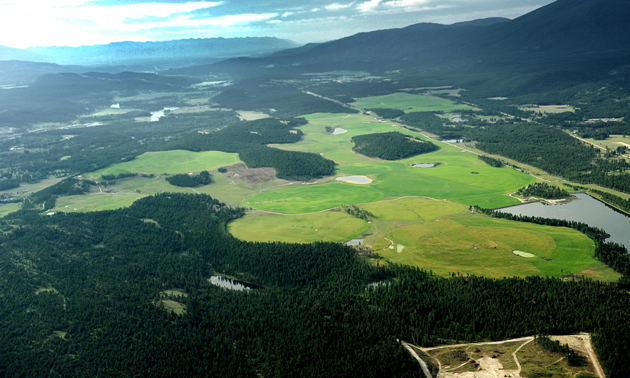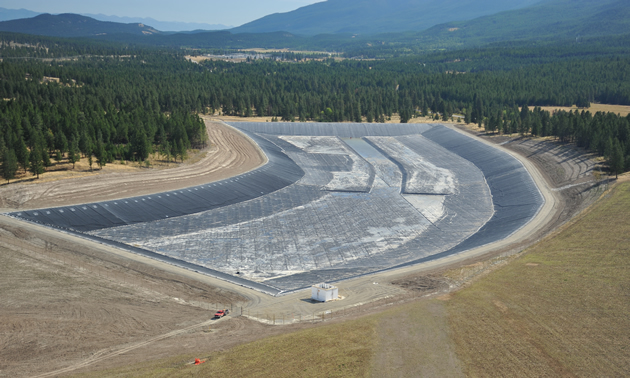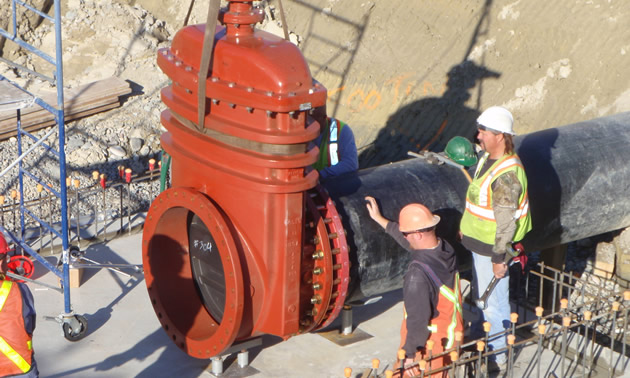Cranbrook wins on wastewater management
The City of Cranbrook won prestigious awards for improving its wastewater management program
The second phase of a multimillion-dollar infrastructure project to upgrade the City of Cranbrook’s existing wastewater treatment and spray-irrigation system is nearing completion.
The project, which began in 2010, has been recognized by the Federation of Canadian Municipalities (FCM) and the Association of Professional Engineers and Geoscientists of BC (APEGBC). The City received the 2012 FCM Sustainable Communities Award in the water category earlier this year, and APEGBC’s 2012 Sustainability Award will be handed out in October.
The City of Cranbrook’s system of using treated wastewater, or effluent, to irrigate cropland and pastureland was built in 1978. The storage capacity of the system had become insufficient over the years, so in 2009, the City made a decision—which was due, in part, to a ruling from the Environmental Appeals Board—to build an outflow station so that excess effluent from the storage ponds could be discharged into the Kootenay River.
The project became an opportunity for the City to improve the entire system rather than just one part of it.
Making it cleaner and greener
Since then, the City has replaced the mechanical aerators in the lagoons on the northeast end of town with a high-efficiency continuous-bubble diffuser system, giving naturally occurring microbes the air they need to break down biological material. The City has also upgraded the main irrigation pump station and installed an ultraviolet disinfection facility at the spray-irrigation site. High-pressure nozzles on the irrigation pivots at the spray site have been converted to more efficient, low-pressure nozzles to reduce energy consumption and water evaporation. With new technology, the pivots can even be remote-controlled with an iPhone app.
There is a new pond, a third one, at the irrigation site that is designed to store excess effluent, as well as a new pipeline leading to the emergency outfall station on the Kootenay River. According to Jamie Hodge, who is the director of engineering services and the city engineer for Cranbrook, the City won’t even need the outfall station—but if it does, he said, the effluent that will be discharged into the Kootenay River will be of a higher quality than the water that’s already in the river.
“We hope we won’t ever have to discharge, but what we discharge is a very highly treated effluent . . .” said Hodge, and he later added, “so the impact to the river and the natural environment—based on calculations and test results—suggests it will be zero.”
A centre of excellence
According to Hodge, one of the stated goals for the entire project was to turn the spray-irrigation site into a centre of excellence for the use of reclaimed water. In keeping with that mandate, public works crews have upgraded the main pump house so it can be used as a research facility for students and scientists.
“We are hoping that the University of Victoria and the University of Toronto will send folks out for post-grad studies,” said Hodge. “We haven’t gotten too far but we have planted seeds with Agriculture Canada in setting up a pilot research station.”
Going with the flow
The wastewater improvement project has led to other opportunities as well. Ducks Unlimited Canada approached the City of Cranbrook with an initiative to restore a nesting habitat for wetland game birds at the spray-irrigation site, using high-quality effluent.
The City has also been speaking with a private-sector group about developing and maintaining a plantation of fast-growing trees for pelletized fuel—but it will be awhile before that project takes off.
Not done yet
Most of the upgrades to Cranbrook’s wastewater treatment and irrigation facility are now complete, but the City is still working on replacing five kilometres of a 9.4-kilometre pipeline that transports effluent from the wastewater treatment lagoons to the spray-irrigation site.
When everything is finished, Hodge said, the project will be worth $30 million, and he said that not one penny of that has come from the City’s general tax fund.
Eco-friendly and sustainable
Hodge explained why Cranbrook’s wastewater improvement project has been recognized by FCM and APEGBC.
“We take groundwater, we treat it, we use it, we get rid of it, we treat it some more and then we put it back into the ground,” said Hodge. “We have reduced our energy consumption, and because of the aeration system we have reduced our greenhouse gas emissions from that facility by 75 per cent. That certainly is sustainable and we do it year in and year out from this point on.”
For other stories related to the City of Cranbrook's wastewater improvement project, see Where It All Goes and Hats Off to the Ranchers.











Comments